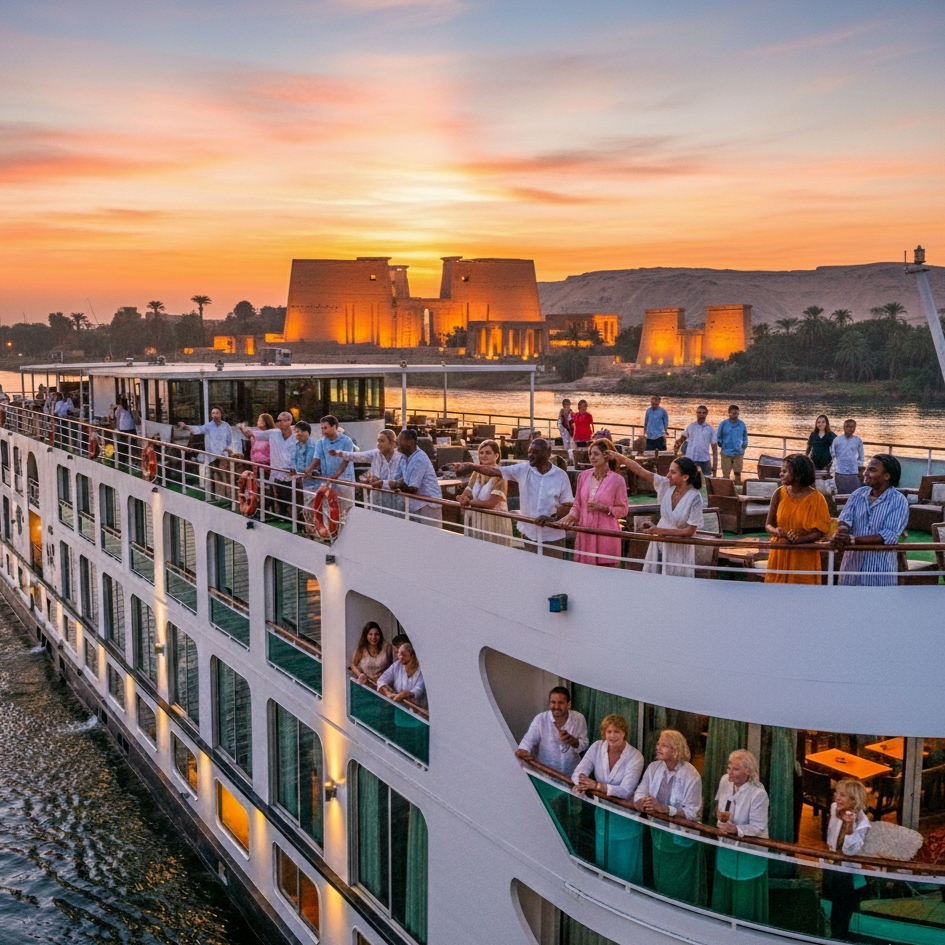Giza: An Overview
Egypt is not only a beautiful country, but it also boasts some of the richest culture and history the world has to offer. One of the richest historic cities in Egypt? Giza…
Home to several cultural monuments and stories of ancient civilization, Giza and its history is a city worth studying, especially for the ancient Egyptian history buffs. In what follows, we’ll be discussing all things Giza, from its geography and demographics to its rich historical significance and tangible offerings.
Known as one of the largest cities in Egypt, third only to Cairo or Alexandria, Giza is a city with a population of nearly 2.5 million as of this year, 2021, and is located on the West Nile [1].
Giza, though historic in many senses of the word, happens to be most famous for being the home of the Giza Plateau.
While the city of Giza has undergone several reconstructions, changes in power, and changes in names throughout centuries of history, It persists to be a bustling and thriving city to this day, still acting as a hub of ancient Egyptian culture and history.
Giza Plateau
Home to some of the most historic monuments in all of Egypt, or the world for that matter, the Giza Plateau boasts the Great Sphinx, the Pyramid of Giza, and several other monumental, ancient temples and pyramids.
The Pyramid of Giza, in particular, was constructed to overlook the capital city of Memphis; a unique and curious location to say the least. In fact, the location and its reasoning are still being studied to this day, uncertain as to whether or not its location was strategically placed.
Other historical monuments that encompass the great Giza Plateau are the tomb of Pharaoh Djet and the tomb of the Pharaoh Ninetjer.
The Pyramid Complex
As mentioned above, Giza is home to the Great Pyramids of Giza complex; a formation of 3 monumental pyramids said to be protectors of the tombs of three famous pharaohs of the time. The pyramid complex is most known for being one of the seven Wonders of the World.
Giza’s Pyramid Complex includes:
the Great Pyramid of Khufu
the Pyramid of Khafre
the Pyramid of Menkaure
You may be wondering how these massive monumentswere constructed, especially considering that they’re thousands of years old and were built without modern technology …
Well, although there’s no concrete proof, ancient Egyptian historians have made the educated assumption that they built a trolly system of sorts to transport the stone. Via manmade ramps of mud, stone, and wood, and moved by rope and wire, the people of the time were able to transport massive stone nearly 500 miles in order to construct what is now known to be the pyramids.
Final Thoughts
If you’re ever lucky enough to visit Egypt, you’d be remiss not to indulge in the rich culture and history by visiting these monumental sights, especially the Giza Plateau and all that it encompasses.
The pyramid complex, in particular, was deemed one of seven wonders of the world, and for good reason.
Ancient Egyptian history is truly one-of-a-kind, and its symbolic yet tangible monuments still hold cultural value today. While Giza is only one aspect of Egyptian culture, it is most certainly one of grand value, still drawing interest and intrigue from experts and tourists from around the world.
Giza; the home of the Great Pyramid, the Great Sphinx, and much more…
To book your dream destination trip to Giza, Egypt, visit: https://circulatetravel.com to book!






